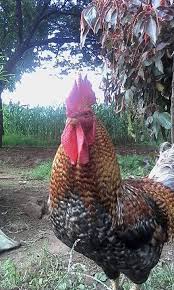This is basically a process by which new poultry offspring or chicks are born or produced by closely related parents or offspring. A farmer may for example set a “brother” against “sister” or “father” against “daughter” in the flock. While this may be a good option when a farmer is looking for certain desirable straits to maintain in the flock, it may be counterproductive when certain bad genes currently existing in a given flock are passed on to another generation. This normally happens when a farmer allows inbreeding to happen several times before stopping. While it is not wrong to retain certain traits in a bird through inbreeding like a bird with a good laying ability, a cock that is very aggressive in protecting hens and young ones or chicken with a good feed to meet conversion rate, this should be done sparingly to avoid stopping only after the bad effects of inbreeding start showing.

Nearly all inbred lines generated by full siblingmating in chicken fail after just three full sibling matings. Once the inbreeding coefficient goes over this threshold, the lines tend to fail to reproduce one male and one female to continue the line.So inbreeding in chickens is not a very good thing to do a lot of.
The reason people like to line breed (the interbreeding of chicken within a particular line or descent usually to continue or perpetuate desirable characters) is that it is the fastest way to select for a type that is caused by a complex interaction of genes. If you have a superior animal the fastest way to increase the frequency of the superior genes in your line is to line breed.
Line breeding is just when you take the superior parent (hen or rooster) and cross the progeny back to the parent (father to daughter or mother to son). You then take the superior parent and again cross it to its new offspring from the inbred mating. You repeat this until infertility becomes a problem or the parent dies.
You can select other progeny that presumably will be better than average for your flock to breed in non-inbred matings or to other close relatives to try and set the good traits in your line.
Line breeding can produce very rapid gains in the quality of your line for certain traits, but nearly always results in a degeneration of the reproductive capacity of your line and you end up outcrossing and starting over. Outcrossing is the introduction of an outside breed in the flock to break the cycle of inbreeding. Line breeding for a few generations can give you some outstanding birds at a higher frequency than you would get by not inbreeding. But eventually this has very undesirable consequences. This is why commercial breeding companies try to avoid inbreeding and concentrate on improving the whole population. The gains are not as dramatic, but they do not fall in the trap of the adverse effects.
The best advice is that if you inbreed always use a superior animal for the mating. If you do not you are just increasing the bad genes in your line.
Any mating between related individuals is inbreeding. Line breeding and full sib mating cause the same amount of inbreeding for the first two inbred generations. Theoretically line breeding and full sib matings should have the same detrimental results for the first two inbred generations. Full-sib mating would be more detrimental for the 3rd and subsequent inbred generations.
The difference is that all the inbreeding comes from the superior parent in line breeding, but half the inbreeding comes from the inferior parent in full-sib matings. This is why it is recommended that inbred matings involving only birds that you think are good enough to warrant it.
Effects of Inbreeding
- Hatch rates begin to decline. A bird that lays 300 eggs through to its adult life slowly starts decreasing its hatching rate to even 170 or 100.
- Deformation: birth deformities begin to occur in the birds especially if this has been done several times.
- Higher percentage of failed eggs in the incubator.
- Chicks that are lucky enough to hatch are very weak and their survival rate is very low.
- The quality and palatability of the meat of the inbred chicken also slowly declines and eating such birds may have some bad after tastes or are just not tasty as the pedigree offspring.
The best thing to do to avoid the adverse effects of inbreeding is to run two roosters; one who is the best from your flock and one from an outside bloodline. This is called out crossing and the mix of genes this provides is sufficient to prevent genetic defects.
So you can do it sparingly if you must maintain certain superior characteristics in your flock but do not overdo it. Outcross Instead!